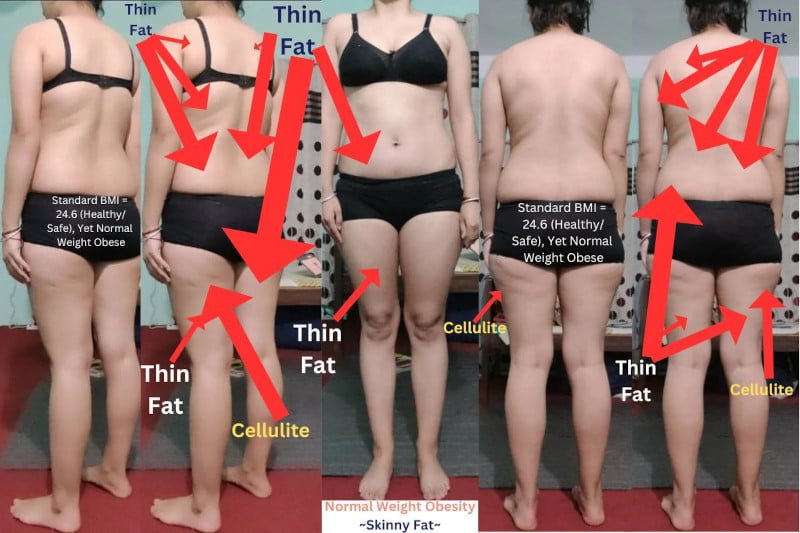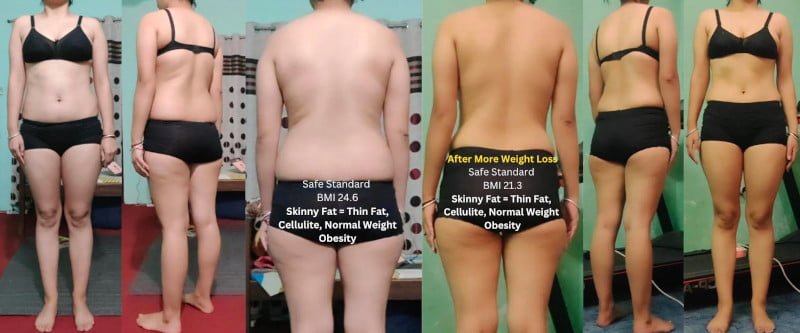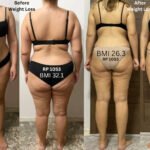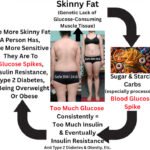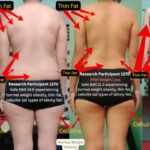How Do I Know If I Am Skinny Fat – What Is Skinny Fat Science?

 At present, skinny fat is a young science (1, 2) and there is no official way for your doctor to diagnose it. Contrary to popular belief on social media, there is a scientific way to determine if you are experiencing skinny fat. To understand how to know if I am skinny fat, you have to understand the foundation of your human body: genetics.
At present, skinny fat is a young science (1, 2) and there is no official way for your doctor to diagnose it. Contrary to popular belief on social media, there is a scientific way to determine if you are experiencing skinny fat. To understand how to know if I am skinny fat, you have to understand the foundation of your human body: genetics.
Your skin color, hair color, eye color, hand/feet size, breast size, genital size, facial features including nose, cheeks, lips, eyes, forehead, and chin, and body composition, no less, are all genetic (3). They are all influenced, to whatever degree, by diet, exercise, and lifestyle. But none of those things can be naturally, permanently (3) changed.
You can temporarily change them, like epigenetically (3) adding muscle mass or losing regular white/yellow body fat (common adipose tissue) or via hair dye, contact lenses, makeup, or the like. But those changes are not permanent.
How Do I Know If I Am Skinny Fat – Genetic Science
It all starts with understanding your unique genetic body composition. You, like every human being, have all the muscle tissue — including muscle fiber ratio (Type 1 and Type 2) — you will ever have at or around birth. If you are genetically blessed, then you have all 600+ muscles fully developed, and look like the Standard Body Type One (BT1) found in any scientifically approved resource (4, 1).
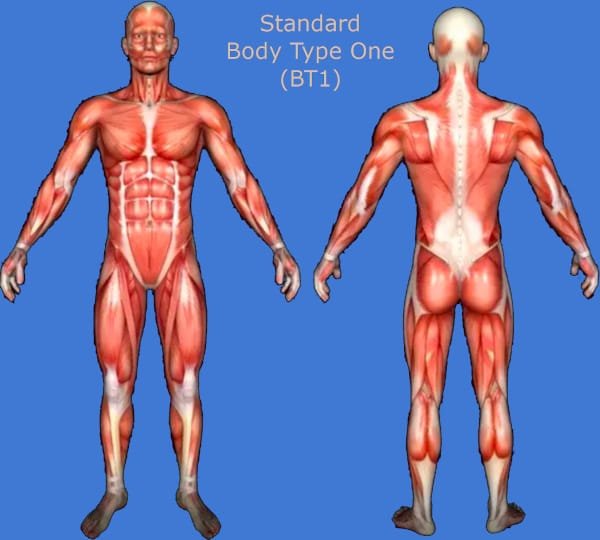
If you are not genetically blessed, then you are experiencing skinny fat tissue where you should have genetic default muscle tissue but do not, and have not since birth. So, how do I know if I am experiencing genetic skinny fat tissue? What is skinny fat tissue and what does it look like?
Research Participant 1170 – Before and After Safe, Successful Regular Fat Weight Loss
Here is Research Participant 1170. They started at a safe Standard BMI of 24.6, meaning by literal scientific Standard BMI definition (1) that they have no excess body fat (regular white/yellow fat). Yet, the skinny fat tissue — cellulite and thin fat (including normal weight obesity) — where genetically they should have muscle tissue is obvious.

Here they are after losing more regular fat weight and getting down to a lower safe BMI of 21.3. But the same skinny fat tissue — thin fat and cellulite — exists in all the same places. No fully developed Standard Body Type One (BT1) muscle tissue. There is no process in the human body that would cause that person’s muscle tissue to turn into any kind of fat tissue, be it skinny fat tissue, regular fat tissue, etc.

Before and After Weight Loss, Research Participant 1053 – How To Know If I Am Skinny Fat?
Here is Research Participant 1053. They started their regular fat weight loss journey at an obese BMI of 32.1 with obvious skinny fat tissue – cellulite and thin fat — where they genetically should have genetic default muscle tissue, as per the Standard BT1, but do not. They safely and successfully lost regular fat weight down to an overweight BMI of 26.3, yet all the skinny fat tissue exists in all the same places.

The common spiel is that weight loss caused them to lose muscle tissue — there is absolutely no evidence they ever genetically (5, 6) had the muscle tissue to begin with, from birth — and that lost muscle tissue magically turned into skinny fat tissue. If that is true (this is not how human tissue works)(1, 3) then it is true for all human beings.
Ok, then explain how Christian Bale lost a lot of weight including obvious muscle tissue and is clearly emaciated, yet no sign of any skinny fat tissue on his body anywhere. How? Genetics.
How Do I Scientifically Know If I Am Experiencing Skinny Fat Tissue – Thin Fat, Cellulite
Because of how young skinny fat science is, even if you underwent an accurate gold-standard MRI scan or CAT/CT scan (6, 5) body composition analysis, neither can discern the difference between regular white/yellow fat tissue and skinny fat tissue. DEXA/DXA scans (5, 6) are the gold standard for bone density, but not accurate when it comes to muscle tissue. And, lean body mass and body fat percentage formulas and calculations (5, 6) are wildly inaccurate and at best very rough guidelines and at worst useless.
 The only way to accurately know if you are experiencing skinny fat tissue and where on your body is by taking the Official Scientific Body Type Quiz. It requires three appropriate scientific images along with 50+ scientifically vetted variables to accurately determine your unique genetic body composition – particularly skinny fat tissue, if any, and where on the body — and shape. There is a less accurate Free Scientific Body Type Quiz version that does not require images.
The only way to accurately know if you are experiencing skinny fat tissue and where on your body is by taking the Official Scientific Body Type Quiz. It requires three appropriate scientific images along with 50+ scientifically vetted variables to accurately determine your unique genetic body composition – particularly skinny fat tissue, if any, and where on the body — and shape. There is a less accurate Free Scientific Body Type Quiz version that does not require images.
Used along with the other Scientific Health Quizzes including the Scientific Metabolism Quiz Health Score, Scientific Diet Quiz Health Score, Scientific Exercise Quiz Health Score, and Scientific Lifestyle Quiz Health Score, you can know if you are experiencing skinny fat tissue, which type(s), where on your body, and how it affects your metabolism, diet, exercise, and lifestyle health choices.
Before and After Skinny Fat Body
References
- Skinny Fat Science: What Is Skinny Fat?, July 26, 2024. https://skinnyfat.fellowone.com/what-is-skinny-fat/
- Skinny Fat Science: Is Skinny Fat Genetic?, November 27, 2024. https://skinnyfat.fellowone.com/is-skinny-fat-genetic/
- Skinny Fat Science: How To Fix Skinny Fat, July 27, 2024. https://skinnyfat.fellowone.com/how-to-fix-skinny-fat/
- Britannica: human muscle system, Shane W. Cummings and Robin Huw Crompton (Fact-checked by the Editors of Encyclopaedia Britannica. https://www.britannica.com/science/human-muscle-system
- Skinny Fat Science: Why Am I Skinny Fat?, December 25, 2024. https://skinnyfat.fellowone.com/why-am-i-skinny-fat/
- Skinny Fat Science: Skinny Fat People – What Does Skinny Fat Look Like?, January 1, 2025. https://skinnyfat.fellowone.com/skinny-fat-people-what-does-skinny-fat-look-like/


